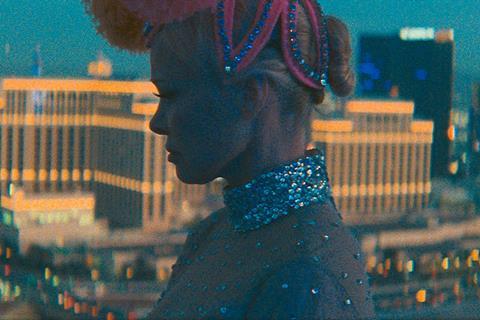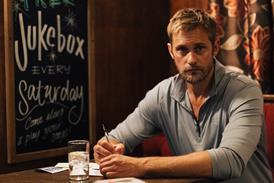Pamela Anderson enters the awards conversation as an ageing Vegas showgirl in Gia Coppola’s third feature

Dir. Gia Coppola. US. 2024. 85mins
The Last Showgirl is an achingly vulnerable picture that both catapaults Pamela Anderson into the awards conversation and stands as Gia Coppola’s best film to date. Its earnest story of women sharing a bond across generations centers on Shelley (Anderson), an aging Las Vegas showgirl confronting the reality that her career may be ending. This is not a film that looks down on exotic dancing or considers the work of these women to be frivolous. It sees them as artists, plying their craft night after night. And Shelley, the veteran among them, is a legend whose longevity inspires many of the women around her.
The performance of her life
Having spent three decades cast as eye candy and ditzy blondes, there is no question that this is the most demanding, layered role of Anderson’s career. It’s also one that she lands spectacularly. This kind of comeback performance out of a major festival like TIFF, where the film plays as a Special Presentation, will surely mark Anderson out for attention and, with its rich ensemble, the film should have legs at the specialty box office.
Despite its name, The Last Showgirl is not focused on the women’s stage performances – it’s not until the end that we actually see a show – rather the preparation and sacrifices they must endure for their art (even though, for some it is merely work). Having been a member of the ‘Razzle Dazzle’ show for over 30 years, Shelley is the most committed. When outsiders question the authenticity of the art, she gives the younger dancers (played by Kiernan Shipka and Brenda Song) a history lesson about the profession; how it originated in Parisian cabaret culture and was once the main attraction of Las Vegas.
Those days are, however, long gone. Razzle Dazzle is the last of its kind on the strip, replaced by younger, more acrobatic and revealing acts such as an adults-only circus that keep stealing audiences from the show. These dancers spend increasingly less time in their plumage of dusty blue and pink feathers, their rhinestone bras and bodysuits, their sharp heels. In an early scene, we see the women leave the stage, run downstairs to their dressing room, change to a new bedazzled outfit and run back upstairs for their next act with incredible efficiency. This grind is Shelley’s entire world, especially in scenes where she diligently practices her choreography at home. That world is crushed when stage manager Eddie (a tender Dave Bautista) informs the women that the casino is closing the show for good in two weeks time.
The startling news sends Shelley into a spiral, causing her to take account of her life: she thinks about settling down with Eddie, rejects the prospects of joining what she considers the new ’classless’ shows, and reaches out to her estranged daughter Hannah (Billie Lourd). In its early stages, The Last Showgirl struggles to string these arcs together. It can also rely too heavily on melodrama (a shouting match between Hannah and Shelley feels especially rushed).
But Coppola— now on her third feature following uneven work on Mainstream and Palo Alto — confidently captures the world built by screenwriter Kate Gersten. Whether it’s Bautista’s weathered appearance or an instantly hilarious Jamie Lee Curtis playing Shelley’s best friend Annette, complete with a spray tan and vermilion hair, the characters feel real. In contrast, Andrew Wyatt’s glittering score and DoP Autumn Durald Arkapaw’s oblique and hazy compositions provide a dreamlike curtain of pixie dust that represents the old Las Vegas. Tellingly, Shelley often dances around a blue angel statue which stood outside the Blue Angel Motel for decades — symbolising how Shelley represents the last vestige of magic from the city’s past.
With its attuned sense of time and space and its interest in an unlikely art, at its best The Last Showgirl recalls John Cassavetes’ The Killing Of A Chinese Bookie, with Anderson channeling the forlorn spirit of that film’s Ben Gazzara. She sums up the fear of watching her profession slip away, of aging out and being rendered obsolete, with incredible thought, oscillating between our pop culture perception of her and Shelley’s difficult reality. She is mercurial, committed and oftentimes unrecognisable, giving the performance of her life. It’s only fitting that in the film’s final triumphant scene, Anderson is where she belongs – in a spotlight that refuses to dim.
Production companies: Utopia Originals
International sales: Goodfellas, feripret@goodfellas.film
Producers: Robert Schwartzman, Natalie Farrey
Screenplay: Kate Gersten
Cinematography: Autumn Durald Arkapaw
Production design: Natalie Ziering
Editing: Blair McClendon, Cam McLauchlin
Music: Andrew Wyatt
Main cast: Pamela Anderson, Dave Bautista, Jamie Lee Curtis, Kiernan Shipka, Brenda Song, Billie Lourd





















